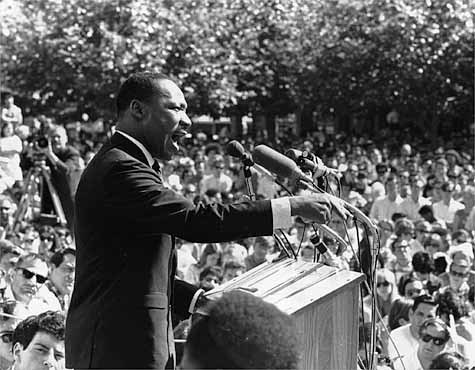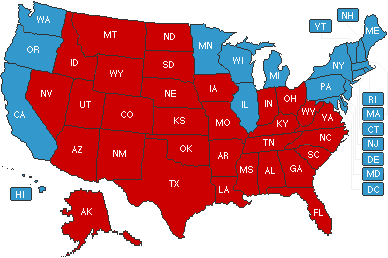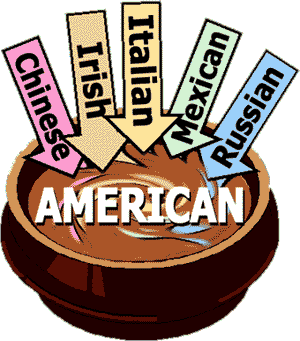You can also take a look at my articles in the aforementioned site by clicking on the link below:
The Issue of Split ticketing in US Presidential and Congressional elections
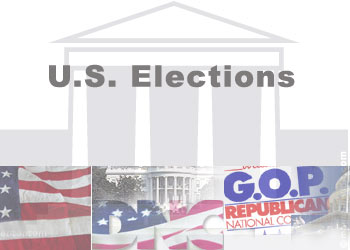
When it comes to the US elections, it seems very surprising that American people throughout their history have mostly preferred to elect a president of one party and a congress of the opposite party.
The reason for such behavior is “split ticketing”. Split ticketing is a vote in which the voter has voted for some candidates of one party and some candidates of the other party.
Studies have been done about why voters choose to split their votes between congressional and presidential candidates who represent competing parties; however, there have been a lot of disagreement among the scholars about why voters split their tickets.
There have been various explanations for the motivations of the split ticket voters and also the conditions under which split ticketing happens. It is not only important to know why split ticketing happens but also to know when and where it happens.
Grofman, Koetzle, McDonald, and Brunell have developed a theory to explain ticket splitting. They believe that it is caused by the difference in median policy positions of voters in district and nation-wide elections. They also believe that split ticket voting is most likely to happen in outlying districts; that is to say in distant districts that are a typical of the party they represent.
Another reason might be the fact that the split ticket voting works best in countries dominated by two parties where a voter is not a strong supporter of either party. One reason for not being a strong supporter of one party can be the ambiguity a voter has about the position of a candidate. Therefore uncertainty and not clarity about candidate position can be one of the reasons for split ticketing. The conclusion that Campbell and Miller (1957) arrived at is to do with this issue. They believe that having a motivation encourages straight voting rather than split ticketing. They believe, “the more highly motivated [the voter] is toward this political objective, the less willing he is to dilute his vote by crossing party lines” (303).
But perhaps the most important reason for understanding the sources of divided government in the US is that voters do so in order to achieve balance between the parties’ policy positions (Erikson 1988; Fiorina 1996; Mebane 2000). That is to say when people are dissatisfied with the performance of legislative branch, they try to modify it through choosing the congressmen of the opposite party.
All in all, the occurrence of divided government in the US is mostly because of voters’ choice of split ticketing. The reasons for such preference are still being hotly debated. Three most argued reasons which were presented in this paper were to do with the difference in median policy positions of voters in district and nation-wide elections, not being a strong supporter of one party and the issues of balance and control.
References:
Carmines, E. G. & Ensley M. J. (n. d.). Policy preferences, party ideologies and split-ticket voting in the United States Retrieved March 31, 2008, from Princeton University Website: http://www.princeton.edu/~csdp/events/pdfs/seminars/Carmines092806.pdf
Burden, B. C. (2006). Strategic voting in the United States Retrieved January 28, 2008, from Harvard University Website: http://www.gov.harvard.edu/student/pjones/strategic.pdf
Karp, J. A. & Garland, M. W. (2007). Ideological ambiguity and split ticket voting Retrieved January 28, 2008, from Sagepub Website: prq.sagepub.com/cgi/content/abstract/60/4/722
Green, B. (2006). The causes of split-ticket voting Retrieved January 28, 2008, from MIT University Website: web.mit.edu/polisci/students/bgreen/split_ticket_voting.pdf
Ghasemi, Z. (2008). Split ticket voting in America – congress vs. executive. Retrieved March 31, 2008, from Ezine Articles Website: http://ezinearticles.com/?Split-Ticket-Voting-in-America—Congress-vs-Executive&id=967775
Split ticket voting. (2008). Retrieved March 31, 2008, from Wikipedia Website: http://en.wikipedia.org/wiki/Split-ticket_voting
Posted in American Studies
Martin Luther King
A quick glance at the biography of Martin Luther King:
Martin Luther King was the most important figure when it came to civil rights movement. He worked hard to obtain social changes for African Americans. He, himself, was an African American. He was also a Baptist minister and he was known for being a great public speaker and for encouraging people to attend peaceful campaigns rather than using violence to achieve their rights. He established the Southern Christian Leadership Conference (the SCLC) in 1957 and in 1963 he led a large crowd of people on a protest march to Lincoln Memorial in Washington, DC. It was where he made his famous “I have a dream” speech. In 1964 he won the Nobel Prize for peace. Four years later, in 1968, he was shot and killed in Memphis, Tennessee, by Earl Ray. The person who has continued his work after his death up to now is Coretta Scott King, his wife. In the US there is a national holiday on January 15 to celebrate his birthday.
“I have a dream that one day this nation will rise up and live out the true meaning of its creed. We hold these truths to be self-evident: that all men are created equal.”
Martin Luther King
Martin Luther King, Jr., known as the greatest leader of the civil rights movement, was born Michael Luther King, Jr. in 1929 in Atlanta, Georgia but later had his name changed to Martin. His grandfather and his father were pastors of a local church called the Ebenezer Baptist Church in Atlanta. Although the blacks in the South were suffering from poor conditions, the King family could afford a comfortable life at the time.
In 1929 when King was born, most black people were living in the south under severe conditions. In addition to having financial difficulties, they were deprived of a lot of civil rights. In other words, blacks and whites lived in different worlds. In the South, blacks had to sit in the back of the bus, they could not attend the same school as the whites, most blacks in the South could not vote, they could not eat in the same restaurants as whites; there were even different drinking fountains for blacks and whites.
King was graduated at the age of fifteen from high school after attending segregated schools in Georgia. He was a clever child and he did well at school. He received his BA degree from the same institution his father and grandfather had attended. It was called Morehouse College and it was a famous Negro institution in Atlanta. Then he had three years of theological study in Pennsylvania. He won a scholarship from Boston University while he was in Pennsylvania and as a result, he could get his PhD in 1955. When he was in Boston he got acquainted with and later got married a young woman named Coretta Scott who was an artist. They had two sons and two daughters.
In 1954 King accepted to become the pastor of a Baptist church in Montgomery, Alabama, named the Dexter Avenue Baptist Church. Simultaneously he became a member of the executive committee of the National Association for the Advancement of Colored People (the NAACP). He was ready then to be the guide for the first great Negro nonviolent demonstration of that time in the United States by managing the plan for the bus boycott of 1955 which lasted for 382 days. Rosa Parks was the person who initiated it. In 1955 she refused to give her seat to a white man while she was at the back of a bus in Montgomery, Alabama, as the local law required her to do so. She was arrested and then Martin Luther King encouraged African Americans in Montgomery not to use the buses. Although most of the blacks in Montgomery did not have cars, they either walked to work or stayed at home. It was only after the Supreme Court announced that the laws regarding segregation on buses were unconstitutional that Negroes and whites could ride the buses equally (December 21, 1956). From the time King decided to become a voice in the civil rights movement, he was encountered with lots of perils. During the days of the bus boycott, not only King was arrested but also his house was bombed.
In 1957 there was a meeting of hundreds of Southern black church leaders. They shared their opinions and at the end King came to the conclusion that black people had to work together to achieve their rights. He believed that they had to be united. One of his favorite sayings was “United we stand, divided we fall”. In 1957 he formed the Southern Christian Leadership Conference (the SCLC) and was elected its president. It members were mostly African American church leaders. The organization supported peaceful protests and its roots were taken both from Christianity and the teachings of Mahatma Gandhi who was a great inspiration for King from the time King was in college.
The year 1960 was important for African Americans. As King’s policy of nonviolent behavior was becoming more and more popular in the South, African Americans put a new way of protesting into practice which was called “sitting-in”. Black people in the South were not allowed to eat in the same restaurants as whites did. In February 1960, four black students in North Carolina, walked into a restaurant and ordered a meal, but the waitress refused to take their order. As a result, the students did not leave the restaurant. They started a “sit-in”. Other students joined them quickly. Although those students were arrested, sit-ins became more and more popular. Even white students in the North travelled to the South to join the sit-ins. Martin Luther King joined a sit-in which was held at an Atlanta restaurant in October 1960. He was arrested and put in prison. The person who could help King in prison was Senator John F Kennedy. He asked the judge to set King free, as Coretta Scott had already gone to him for help, and the judge did so by setting him free.

From 1957 when the organization was established till 1968 when King was assassinated, the SCLC organized King’s speeches of over twenty-five hundred times and his travels of over six million miles. King also wrote five books in addition to his many articles. His leadership for massive protest in Birmingham, Alabama, happened in these years. The protest was what he called a coalition of conscience. He also encouraged the African Americans of Alabama to register in order to vote. Then 1963, the same year when he was chosen as the Man of the Year by Time magazine, he led a peaceful march of 250,000 people to Lincoln Memorial in Washington, DC where he gave his address “I have a dream”. At that time, twelve million of nineteen million black citizens in the US lived in the South. He compared opinions with President John F Kennedy and he also campaigned for President Lyndon B Johnson. He was arrested for more than twenty times and was attacked at least four times. He was given five honorary degrees and became not only a figure of the civil rights movement but also a world figure.
He received the Nobel Prize for peace in 1964, when he was only thirty-five, making him the youngest man to have received the Nobel Peace Prize. When he became aware of his selection, he donated his prize money of $54,123 to the development of the civil rights movement.
On April 4, 1968, King was in Memphis, Tennessee in order to lead a protest march in sympathy with striking garbage collectors of the city. On the same day, while he was standing on the balcony of his motel room, he was shot and killed by a man called James Earl Ray. His assassinator was sentenced to 99 years in prison and died while he was serving his sentence in 1998. But many people believed that Ray was not alone and that there was a conspiracy behind the assassination designed by white politicians and acted by Ray.
On the stone above his grave the last words of his most famous speech are engraved:
“Free at last, free at last; thank God Almighty, I’m free at last.”
But have the followers of Martin Luther King achieved his goals and dreams? The answer to this question is “not yet”, King’s dream of true equality has not fully come true, as right now in the US a young African American is five times more likely to be put in prison, out of work, or dead in street violence when compared to a young white American.
References:
Hansen, D. D. (2003). The dream: Martin Luther King, Jr., and the speech that inspired a nation. New York: Harper Collins Publisher.
McLean, A. C. (2003). Martin Luther King. Hong Kong: Oxford University Press.
Falk, R. (1993). Spotlight on the USA. New York: Oxford University Press.
Haberman, F. W. (1972) Nobel lectures, peace 1951-1970. Amsterdam: Elsevier Publishing Company.
Posted in American Studies
Social Class in the United States
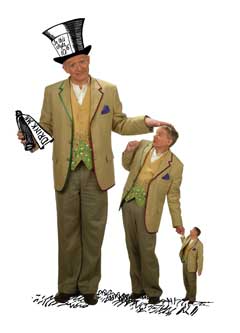 Social scientists believe that it is indeed very difficult to categorize the social class within the United States in the cliché terms of the rich, the middle class and the poor. The fact is that American society is much more economically and culturally diverse. There are a lot of differences in people’s wealth, income, education and occupation that one can claim there are dozens of social classes. Some sociologists such as Dennis Gilbert, William Thompson, Joseph Hickey and James Henslin have suggested distinct social classes. These social classes include an upper or capitalist class consisting of the rich, an upper middle class which is consisted of highly educated and well-paid professionals, a lower middle class which is consisted of semi-professionals, a working class consisting of clerks and blue collar employees whose work is filled with routines and a lower class consisting of people between the working poor and underclass.
Social scientists believe that it is indeed very difficult to categorize the social class within the United States in the cliché terms of the rich, the middle class and the poor. The fact is that American society is much more economically and culturally diverse. There are a lot of differences in people’s wealth, income, education and occupation that one can claim there are dozens of social classes. Some sociologists such as Dennis Gilbert, William Thompson, Joseph Hickey and James Henslin have suggested distinct social classes. These social classes include an upper or capitalist class consisting of the rich, an upper middle class which is consisted of highly educated and well-paid professionals, a lower middle class which is consisted of semi-professionals, a working class consisting of clerks and blue collar employees whose work is filled with routines and a lower class consisting of people between the working poor and underclass.
Now, we are going to take a look at the most common definitions of each social class as briefly as possible.
Upper Class:
This term refers to a wide range of elites in the USA. They are also referred to as “the blue-blooded”. There can be a division within this category and that is the upper-upper class and lower-upper class. The former referring to established upper-class families while the latter includes people of great wealth. According to statistics, less than five percent of Americans belong to upper class. Corporate America is mostly managed by those who are in this category.
One significant characteristics of this group is that of inherited privilege. In other words, people in this category do not have to work in order to keep their status. Their social status is passed on from a generation to another automatically.
Middle Class:
This group is generally talking about individuals who are between the extremes of wealth, regardless of considerable differences in income, culture, educational background and occupation. This category is consisted of two groups: the upper middle class and the lower middle class. The former is used to describe a relative elite of professionals and managers who are highly educated, and are well-paid professionals with significant work autonomy. Lower middle class is consisted of semi-professionals and salesmen who have some college education and are mostly supervised more closely. Around 47% to 49% of the population of the US belongs to this category.
Working Class:
Sociologists estimate that around 32% to 45% of the US population belongs to working class. A distinctive characteristic of this group is that workers from this category only take orders. They are not awarded for their ideas and they are not taken into consideration when it comes to decision making process. So that means the working class is consisted of blue-collar workers, while lower middle class is consisted of non-professional white collar workers.
Lower Class:
Well, this term is applicable to those at the bottom of the social hierarchy. Around 13% of the US population falls in this category. They are mainly low-rung retail and service workers or people who are unemployed or are unable to work.
References:
http://en.wikipedia.org/wiki/Social_class_in_the_United_States
Posted in American Studies
American Studies
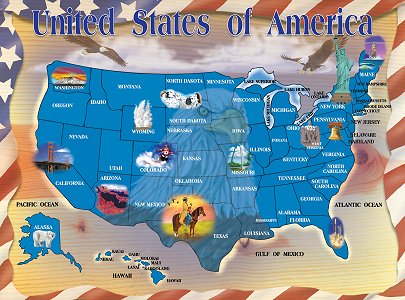
This is the end of the first semester and we are asked to write about our understanding of American Studies, what American Studies are, what memories are brought back when we think of the USA, what comes to our mind first when we think of the USA now, etc.
Well, when I go back the memory lane, what especially comes to my mind is the idea that the USA is a far, far away country containing lots of pleasant souvenirs which are brought to me by my aunts and uncles! Well, this idea belongs to many years ago, despite the fact that I still receive the souvenirs.
Now, when I think of the USA, I am faced with lots of different issues like the US politics, economics, history, culture, literature and cinema. Every morning when I take a glance at the paper, I cannot avoid reading something about the USA. What I am trying to say is that it is almost impossible to live in this era and hear nothing about the USA. Actually, I have come to this conclusion that American Studies is very much interlinked to World Studies. Simply put, if you know about the US, you’ll know how the world goes round!
A couple of days ago, we, the students of the first semester of North American and European Studies of Tehran University had a one-hour video conference with students of different fields, mostly post-graduate students, of Purdue University in Indiana, the United States. We talked about the concept of American studies. What was really amazing for both groups was the fact that we, Iranian students, viewed American Studies very much politics-centered, while the American students viewed their country very much economics-centered. While we were focusing on the fact that the US presence in the Middle East is viewed by the people of the region merely as political interference and as a result of American foreign policy, our American counterparts were talking about equal opportunities and the idea that one’s individual achievement is possible. It is like being out of a system and talking about it in opposed to being in a system and talking about the same issue from a different perspective.
In conclusion, I dare say American Studies is full of diversities. If you are tired of lengthy lectures of your professors about cliché subjects, then this is definitely the course you should be studying. But don’t be too excited about this field. Firstly and most importantly, you have to make sure that you have no other priority over American Studies.
Posted in American Studies
Human Rights and Guantanamo
Whether the United States is an advocator of human rights or not is questionable. On one hand, the USA has been praised for sheltering many political and economic refugees in times of international strife. On the other hand, it has been criticized by both friendly and hostile countries for supporting serious human rights abuses, including torture, legal rendition, assassination, imprisonment without trial and for supporting dictatorships.
The United States tends not to obey human rights when it comes to national security. That is to say, it has suspended various guaranteed rights on national security grounds, usually in wartime and conflicts like Civil War, Cold War and the War against Terror.
One of the most controversial issues that portrays a clear example of both US strategy towards national security and US suspension of human rights lies in Guantanamo Bay situated in Cuba. This detention camp which has come into existence in 2002 holds people who are charged by the United States government with being terrorist operatives, as well as those who are no longer considered suspects but are being held pending relocation elsewhere.
Since the beginning of the War in Afghanistan, 775 detainees have been brought to this detention camp from which 420 have been freed. By August 2007, about 355 detainees remained. More than a fifth of them are cleared for release but might have to wait for months or years as the US official have difficulty finding suitable places to send them to. According to US officials, of the 355 detainees who are remained, 60 to 80 would be put on trial and the rest would be released.
What is interesting is that the US government has classified the detainees held in Guantanamo as “enemy combatants”, rather than prisoners of war (POWs). The Bush Administration claims that according to the 4th Article of the Geneva Convention, these captives are not POWs and therefore do not have rights of POWs.
Now about the conditions of the prisoners: They are held in small cells and lights are kept on day and night. They have rations like other prisoners in the US, with consideration for Muslim dietary needs. However, detainees have been rejected access to the Quran for daily prayer. They are kept in isolation most of the day, are blindfolded when they are moving within the camp and they are also forbidden to talk in groups of more than three. According to the United States doctrine isolation and silence are effective means of breaking down the will of prisoners to resist interrogation. Red Cross inspectors and released detainees have talked about the use of torture in Guantanamo including sleep deprivation, the use of so-called truth drugs, beatings and locking in confined and cold cells. Human rights groups say that indefinite detention constitutes torture.
One of the allegations of abuse at the camp is the abuse of the religion of those kept in Guantanamo. The US government has claimed that they respect all religions. However, prisoners released from the camp have reported abuse of religion included flushing the Qur’an down the toilet, defacing the Qur’an, writing comments and remarks on the Qur’an, tearing pages out of the Qur’an and denying detainees a copy of the Qur’an.
The use of torture in Guantanamo Bay has made human rights organizations and critics protest all around the world. Only 9days ago, on 11 January 2008, thousands of people, including Amnesty International members and supporters from all over the world, have taken action to mark the sixth anniversary of the first transfers of detainees to Guantánamo. There have been protests in 30 countries on that day. Street theatres, poetry readings and the recreation of Guantanamo cells were among tens of activities which were performed in different countries. People gathering on that day called for both closure of Guantanamo and ending all illegal detentions, whether at Guantanamo or elsewhere.
And finally, exactly 2 days after the Guantanamo anniversary, US Navy Admiral Michael Mullen, the Chairman of the Joint Chiefs of Staff was the latest US official to say to the world the Guantanamo should be shut down. What he said was really thought-provoking: “More that anything else, I just think it has been the image – how Gitmo (i.e. Guantanamo) has become around the world, in terms of representing the United States. I believe from the standpoint of how it reflects on us that it’s been pretty damaging.”
P.S. Road to Guantanamo is the terrifying first-hand account of three British citizens who were held for two years without charges in the American detention camp at Guantanamo Bay.
This video clip is worth taking a look at:
References:
1) http://en.wikipedia.org/wiki/Guantanamo_Bay_detention_camp
2) http://en.wikipedia.org/wiki/Human_rights_and_the_United_States
3) http://en.wikipedia.org/wiki/Human_rights_in_North_America
4) http://www.amnesty.org/en/news-and-updates/feature-stories/the-world-shouts-close-guantanamo-20080116
Posted in American Studies
Voting and Non-voting Behaviors in 2004 US Presidential Election
The USA presidential election is conducted every 4 years in November. It uses a system of “first-past-the-post” or “winner-takes-all” which means the candidate who gets the majority of popular votes does not necessarily win; what is more important is getting the majority of electoral votes. In such a system an individual might feel that his vote can not make a difference in the outcome of the election and therefore may choose not to vote at all. That is why some scholars believe about 50 per cent of people who are eligible to vote prefer to stay at home and not to show up in the Election Day.
In this paper, the theories of voting and non-voting behavior in 2004 presidential election are discussed. In other words, we are going to see whether party identification model or issue voting played an important role in individuals’ opinions who voted and if they did not vote, what was the reason behind that?
The United States presidential election of 2004 was between the Republican candidate, George Walker Bush, the President of the United States and the defeated Democratic candidate, John Kerry, the junior United States Senator from Massachusetts.
Bush received about 51 percent of the votes cast (62 million votes), while Kerry received about 48 percent (59 million votes). Bush could get 286 electoral votes and Kerry 251. The counting of the votes in the state of Ohio was controversial and many believed that if voting in Ohio had proceeded fairly, Kerry would have become the US president.
There was only a slight difference between the states which voted for Democrats and the ones which voted for Republicans in comparison to the 2000 presidential election. The difference is to do with only three states. Bush took Iowa and New Mexico (combined 12 electoral votes), both won by Al Gore in 2000, while Kerry took New Hampshire (4 electoral votes), which Bush had previously won. Bush got a net gain of 8 electoral votes from these switches.
This result is to do with party identification model. That is to say the Southern states generally voted for George W Bush, while the Northern states supported the Democratic candidate, John Kerry. But this is just a mere generalization if one says that in the 2004 presidential election, party identification model was the most important factor. Nevertheless, its importance is not questionable.
Here is the 2004 election map with the color blue for Democrats and red for Republicans.
The most important factor in voting theories of the 2004 was about issue voting. In other words, voters paid a lot of attention to the issues that were supported by candidates. Above all people’s concern was the issue of national security including terrorism and moral values which was advocated by Bush. On the other hand, Kerry’s slogan was “stronger at home, respected in the world.” And he also paid more attention to economic issues like jobs and health care. One should bear in mind that the 2004 election was the first presidential election after Sep. 11, 2001 and very logically if one felt threatened, the best candidate to vote for would be a Republican. And very basically that was the reason why individuals voted for George W Bush.
The percentage of voting-age citizens taking part in the 2004 presidential election was higher than the previous one in 2000. 64 percent of voter turnout (126 million) in the 2004 election was a record number for a presidential election. Among 72.1 percent of the people registered, 63.8 voted, that is to say 16 million registered voters did not cast a ballot. Well, there were different reasons why these registered nonvoters did not show up: 20 percent said that they were too busy on the Election Day, 15 percent said that they were ill or had a family emergency, and 11 percent said that they felt their votes would not make a difference in the outcome. Other reasons included being out of town, not liking the candidates, confusing about voting or registration, etc.
All in all, the element which was of great importance in the 2004 presidential election was about issue voting and the issue which most people were concerned about was national security. People chose their future president retrospectively, as the Republican Party is known for being a better leader when it comes to foreign policy and therefore national security.
References:
1. McKay D., Houghton D. & Wroe A. (2005) Controversies in American Politics and Society, United Kingdom, Blackwell Publishing
2. http://en.wikipedia.org/wiki/United_States_presidential_election,_2004
3. www.census.gov/population/pop-profile/dynamic/Voting.pdf
4. mwhodges.home.att.net/election2004.htm
5. http://www.uselectionatlas.org/RESULTS/national.php?year=2004&minper=0&f=0&off=0&elect=0
Posted in American Studies
The Concept of Melting Pot as an American Identity
Melting pot, the combination of people from different cultures, races and religions in one multi-ethnic society, is undoubtedly one of the most important features of the American Identity. It is one of the elements that led to the growth of the population of the United States specifically during the large-scale immigrations at the beginning of the 20th century. In this paper, I am going to have an overall view about the opposing ideas toward this metaphor.
The term, melting pot, got its name in 1908 after the first performance of a play called “The Melting Pot” in Washington DC by Israel Zangwill. The immigrant protagonist of the play announced: “Understand that America is God’s Crucible, the great Melting-Pot where all the races of Europe are melting and reforming! A fig for your feuds and vendettas! Germans and Frenchmen, Irishmen and Englishmen, Jews and Russians—into the Crucible with you all! God is making the American.”
One must bear in mind that the idea of melting pot is associated with “model” immigrants who came to the United States legally and through the Ellis Island. They are labeled as model immigrants because they were successful workers who could forget their historic identities and absorb the ways of the host society. That is to say, African Americans and Native Americans are not taken into account. Although African Americans have fully integrated into American culture, the inter-marriage between whites and non-whites was not permitted in many US states until 1967(under anti-miscegenation laws). This issue, excluding African Americans and Native Americans form the melting pot process, is of intense debate nowadays.
Multiculturalist View of the Melting Pot Theory:
Multicuturalists are known by the coinage of the term “salad bowl”, or what Canadians call “cultural mosaic”, which means the immigrants do keep their national and cultural characteristics when they integrate into a new society.
Multiculturalists are those who support programs like bilingual education and affirmative action in order to support minority immigrant groups. In other words, they do not agree with the idea of assimilation for immigrants.
The reason behind this lies in the fact that multiculturalists, who have got a strong sense of nationalism, believe that an imposed assimilation can give way to the rise of opposing integration groups. They believe that assimilation makes immigrants lose their original cultural or even linguistic identity.
They also comment that this process of assimilation has created a gap between different members of an immigrant family, as the use of the native language in English classes in the United States has highly been disapproved of. This leads to having more immigrant children who are reluctant to talk in their mother-tongue language at home with their parents.
Assimilationist View of the Melting Pot Theory:
Despite the multiculturalists who view the melting-pot theory as oppressive, the assimilationists argue that it is favorable for both the country and its people economically only and only on the condition that immigration is under control.
Assimilationists believe that this multi-ethnic country has been created because of its success to build one national identity. They argue that giving special privileges to those from different ethnicities creates hatred between the majority group. They believe the government is responsible for helping immigrants to get in line with the mainstream culture.
Assimilationists believe that paying attention to the cultures and customs of the immigrants is impossible to follow, as large numbers of immigrants are coming from third world countries and therefore different backgrounds. That is why they do not agree with multiculturlaists. Besides, they say that even meeting the needs of immigrants will be very costly.
A Moderate View of the Melting Pot Theory:
What is suggested here by some scholars is that there can be a balance between multiculturalist’s and assimilationist’s points of view. They argue that immigrants do not need to put away their original culture completely. They can consider themselves as citizens of the host country first and as citizens of the country in which they were born second. This idea implies that though they practice their cultural traditions, when it comes to choosing between the two countries, they will serve the interests of the host country as it is of overriding importance to them.
They comment that while English is the main language spoken in schools, there must be optional courses for foreign languages. Advocators of this view claim that when the government supports such cultural practices within the immigrant minority groups, the immigrants will automatically share a love of the host country.
Does the Melting Pot Boil over?
According to some scholars, yes. There have been claims that The United States is beyond its limit to accept any more immigrants, specifically more Mexican immigrants. Apparently as Mexicans are coming to the country in large numbers, they feel very comfortable with their own culture and not only have they assimilated into the American culture and identity, but also they are seen as a threat to American culture and identity as they are changing them dramatically.
In conclusion, although it is crystal clear to all that US history is that of immigration, the American identity is doomed to change if immigration control and most importantly border control (in case of Mexicans) are neglected.
References:
1. http://en.wikipedia.org/wiki/Melting_pot
2. http://news.bbc.co.uk/2/hi/americas/4931534.stm
Posted in American Studies
Film Review
We were all asked by one of our professors to watch a film called “Dead Man” and write a review on it. I do recommend this film to you if you are interested in knowing about the real image of westward movement in the USA during the late 19th century. Below you can find my film review plus a short ad of the film.
Posted in American Studies
Co-author Book Review
The Americans: An Economic Record
By Stanley Lebergott
Dr. Ameli
Co-author book review by: Hedieh Naseri and Elaheh Jarrahi
Year of publication: 1984
City of publication: New York
Hardcover: 560 pages
Publisher: W W Norton & Co Ltd; 1st edition (August 29, 1984)
Language: English
ISBN-10: 0393018237
ISBN-13: 978-0393018233
Price: $31.60
About the Author:
Stanley Lebergott is a prominent professor of economics at Wesleyan University in Connecticut. He was formerly an economist with the U.S. Bureau of the Budget and the U.S. Department of Labor. He was a member of the President’s Commission on Federal Statistics in 1971 and president of the Economic History Association in 1984. He is the author of Consumer Expenditures: New Measures & Old Motives, Pursuing Happiness: American Consumers in the Twentieth Century, Wealth & Want, The American Economy: Income, Wealth, & Want, and Pursuing Happiness: American Consumers in the Twentieth Century.
The book “The Americans; an Economic Record” is considered as a reference book in the field of economics and has been cited by many other authors. The overall view of the author is very well reflected in other economic books, as they have all used it as a reference. This means that Lebergott could completely achieve what he wanted. The topics that he is preoccupied with are economic forecasting, right to labour, immigration, industrialization, unemployment, business depressions, urban growth, technology and innovation etc.This book is not recommended for people who have not got first an economic base and second a history background of the United States of America. It is suggested to anyone who is an undergraduate, postgraduate or professor in the field of economics.
Descriptive Analysis:
Although the title of the book clearly shows that the author is going to talk about American economy, it also talks about the gained power of the Americans to prophesy their future, particularly from the economic point of view. This idea can be seen in this excerpt of the book: “The ancient Greeks saw Clio as the “Muse of Prophecy and History.”[1] To guide every day’s activity we must prophecy. But “we walk backward into the future.”[2] Forecasters must look to the past; what other experience is there? Some analysts rely on models with dozens of behavioral equations. But they fit them to data from the past. All analysts choose decisive variables based on their view of the past, giving different weights to particular elements of supply and demand, to the class struggle, to human consciousness. As Sir George Savile wrote long ago, “The best qualification of a prophet is to have a good memory.” Another characteristic of the American economic history according to the writer is that of choice. That is wholly because of the choice that the immigrants to America made, regardless of what their reason for immigration or migration was.
v Author’s main questions:
1) Why were the Indians ignored so completely?
2) How was it possible for the US to have 30 ups and downs in business process? In other words, how could the US survive during thirty depressions?
3) Why did Congress decide to sell two billion acres of the public domain so extravagantly?
4) Why was not bank deposit chosen before the 1930s?
v Author’s general answers to the mentioned questions:
1) Firstly and most importantly Indian’s way of life was largely different from the whites’. Secondly neither Britain, nor France nor Spain considered the Indians as a power to be allied with. And that is the destiny of all the ethnic minority groups. (Lebergott, 1984)
2) What is discussed here is that the USA has never had what is literally called a “depression” except the Great Depression of 1929-1939, which means the US has almost ever experienced slight depressions, without unemployment. The Great Depression was severe because it faced unemployment in great numbers. (Lebergott, 1984)
3) The main purpose of this bargain was to develop a public land policy. And the main factors that led to this were Louisiana Purchase, Westward movement and federal debts that the government had to pay back to some states. (Lebergott, 1984)
4) Before 1930, Congress was unwilling to support banks from failing. For example the Federal Reserve Act was defeated by Congress in 1913 and it imposed many damages to not only bankers but also depositors.
Critical Analysis:
It’s been claimed in this book that American Independence was fought for political reasons rather than economic ones. But based on American history it’s clear that Americans protested against the British because of the taxation like the Stamp Act and Sugar Act. (for further reading go to The American Promise: A History of the United States, Volume I: To 1877 by James L. Roark, Michael Johnson, Patricia Cline Cohen, Sarah Stage, Alan Lawson and Susan M. Hartmann) Now in comparison to other books available on the subject like: “History of the American Economy with Economic Applications” by Gary M. Walton and Hugh Rockoff and “A New Economic View of American History: From Colonial Times to 1940″ by Jeremy Atack, Peter Passell and Susan Lee one can say this book is rather indigestible for the public. On the other hand, it provides the professional reader with different charts, tables and figures. What the book under review has got in common with the aforementioned books are the subjects such as: industry and finance, public land policy, the Great Depression and colonization. All in all, despite the incomprehensible text of the book, the author could achieve all the goals he had in mind mostly with the use of charts, diagrams and figures, all equipped with reliable sources.
References:
http://www.econlib.org/library/Enc/WagesandWorkingConditions.html
http://www.amazon.com/New-Economic-View-American-History/dp/0393963152/ref=pd_sim_b_title_1
http://www.chapters.indigo.ca/books/search?keywords=Lebergott&pageSize=10
Posted in American Studies


